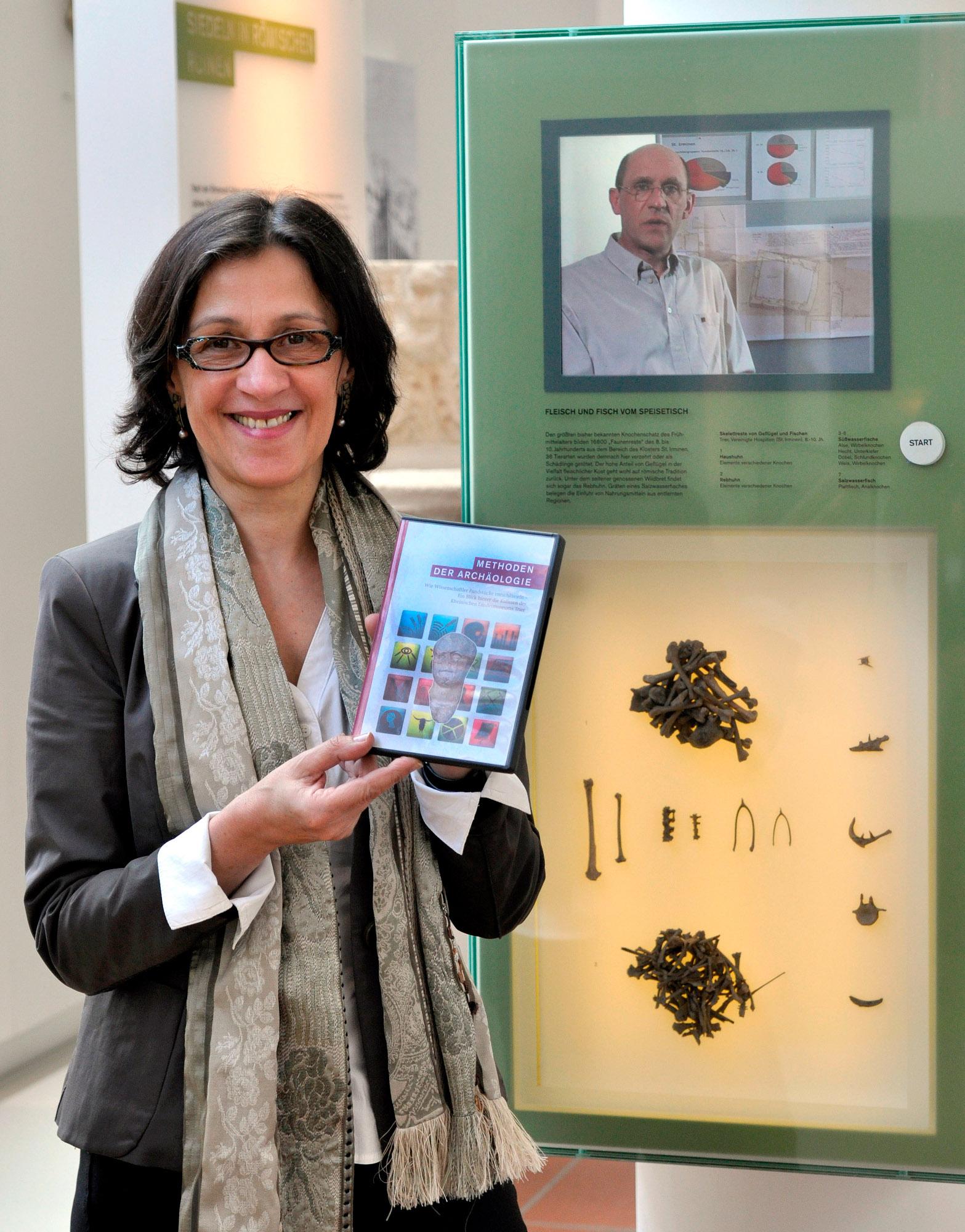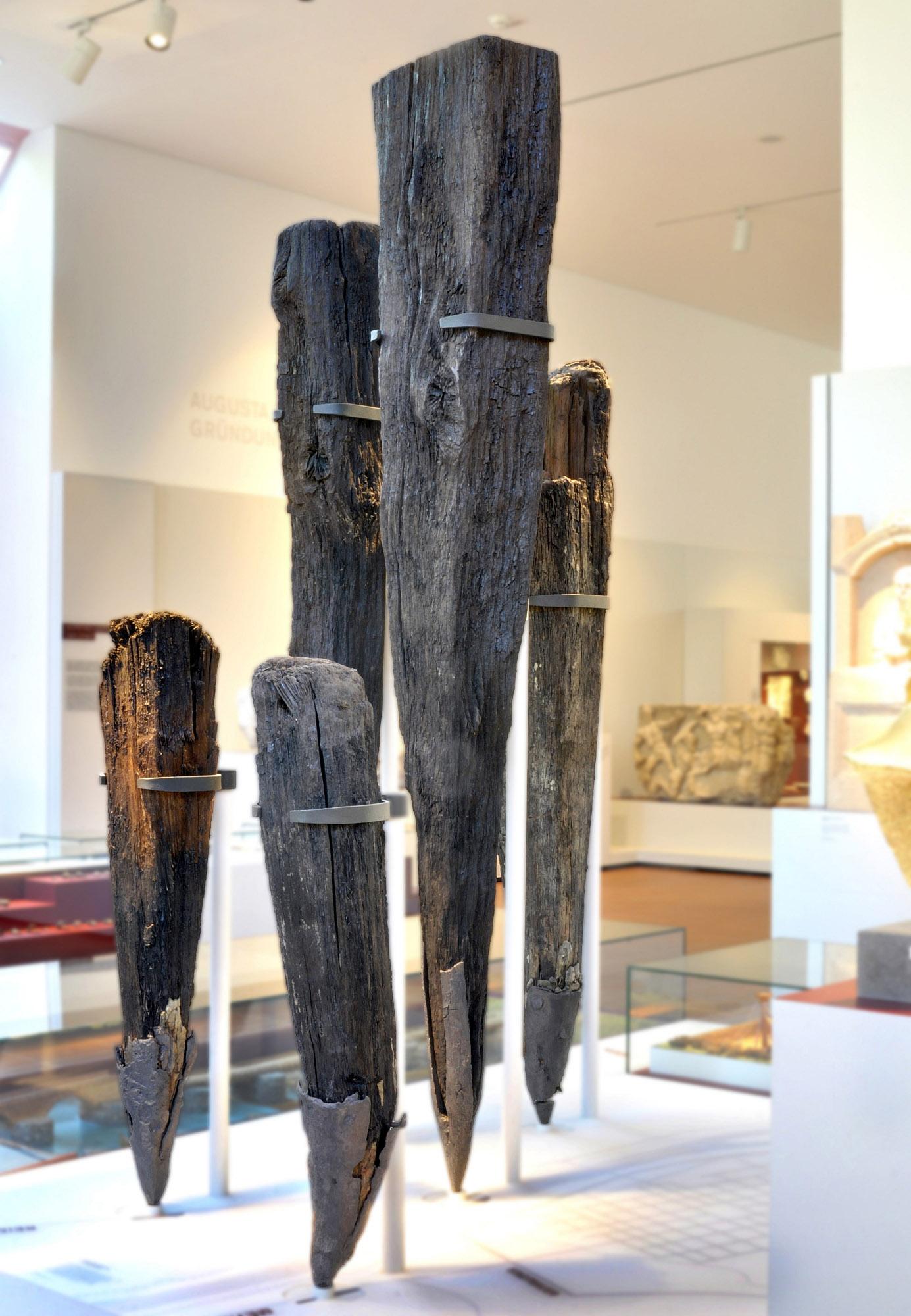How old is Trier?
How would you describe dendrochronology and the nature of your work?
M.N-E.: The key principle of dendrochronology is the analysis of tree rings, whose widths are measured and displayed as the annual ring values of a tree graph. The width of annual rings is determined by the general site parameters (soil quality, slope, altitude, exposure, etc.) and mainly due to climatic conditions (duration of the growing season, water balance, etc.). Therefore, the tree ring graphs of two trees, grown at the same time and under comparable site and climatic parameters show a similar trend. The method of dendrochronology is based on this fact. Tree ring calendars which we have compiled for Central Europe, and of course specifically for the Trier region – are used as the basis of dating.

How could the founding of the city of Trier be determined with the aid of dendrochronology?
M.N-E.: The construction of a bridge crossing the Mosel River is associated with the founding of the city and also the further expansion of the city. Today we can say that in the background of important political events under Roman administration, three consecutive bridges were built on the same spot along the Mosel. At the same time, every new construction reveals significant progress in terms of construction technology, traffic planning and design.
The actual founding of the city only occurred in the Augustan era, i.e. during the reign of Emperor Augustus between 30 BC and 14 BC. Unfortunately, we do not have precise details in the written sources for a precise compilation of Trier’s founding phase. In Roman texts the city is first mentioned in the course of the 1st century AD. Consequently, we only have archaeological finds at our disposal. But these cannot be dated to the exact year. We certainly know that a monumental memorial to honour the adoptive sons of Emperor Augustus – Gaius and Lucius Caesar – was located in Trier as early as 4 AD. But oak woods which stem from the piles of a first Roman bridge and were discovered in the early 1960s are convincing traces of the city’s founding phase, because they could be accurately dated.

Does this wood provide the crucial data to identify the city's founding phase?
M.N-E.: Yes! Among other things, numerous wood came to the surface of the water as a result of the canalisation of the Mosel River. The analysis of over 200 wood samples by the Rheinisches Landesmuseum Trier was able to explain the complex building history of Roman bridges in Trier. With the aid of dendrochronology, the year 18/17 BC could be determined as the felling period for the trees used. At the same time, the construction period of the first Roman bridge is proven with this dating.
In this respect, the bridge is also of crucial importance for the precise compilation of the city’s founding phase as a bridge and road plan closely associated with early Roman Trier, i.e. they are aligned with one another. The bridge forms the extension of the city’s east-west axis over the Mosel River. But above all it is part of a major Roman road which led from Lyon, in the south, through the Rhone and Saone Valley, over the Mosel River, via the Rhine River to Cologne and the military camps located there.
